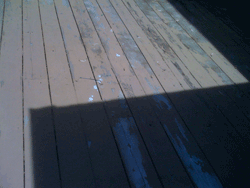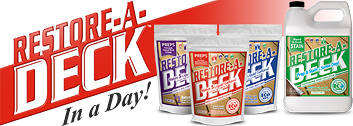Deck Stripping Tips for 2025
Restoring a deck starts with proper wood preparation, which means thoroughly cleaning the surface and removing any old, failing deck stain. If the old stain is left behind, the new stain won’t penetrate the wood correctly, leading to premature failure. Stripping the deck down to bare wood is essential to open up the pores and ensure long-lasting protection.
How to Remove Old Deck Stain
To effectively strip an old stain, use a high-quality deck stripper. These products are designed to remove most:
- Clear and tinted semi-transparent stains
- Film-forming clear sealers and water repellents
- Common contaminants like dirt, mold, mildew, and mill glaze (often found on newer wood)
Dealing with Peeling Deck Stain
If your deck has a solid-color stain or paint, removal can be far more challenging. Many of the worst offenders come from big box stores—these 100% acrylic or silicone-enhanced stains tend to peel quickly yet are extremely difficult to remove.
For these stubborn coatings:
- Apply a strong deck stripper and let it dwell for at least 30 minutes, rewetting it occasionally to keep it active.
- You may need to repeat the process multiple times for heavy buildup.
- Sanding may be necessary for over-applied or particularly stubborn spots to fully expose the bare wood.
Best Deck Stain Stripper & Pro Tips
- Always choose a professional-grade deck stripper for maximum effectiveness.
- Patience is key—stripping a deck properly takes time, and there are no guarantees with solid stains or paints.
- Prevention is the best solution—avoid solid stains and deck paints altogether, as they are expensive and time-consuming to remove once they fail.
Final Step: Brightening the Wood
After stripping, apply a wood brightener to restore the wood to its proper pH level. This step is crucial because it:
- Enhances the wood’s natural color
- Helps the new stain absorb evenly and deeply
- Neutralizes any leftover stripper residue
By following these steps, you’ll ensure your deck is prepped correctly, allowing for better stain adhesion, deeper penetration, and longer-lasting protection.



1 comment
Do I need to mask or protect the siding of my house where it meets the deck, and the painted rail before applying the deck stripper, or is it safe if some overspray gets on the paint?